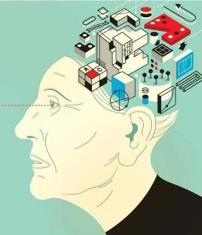Out: crossword puzzles. In: digital cognitive assessments and training
 Do brain games work? (The Boston Globe):
Do brain games work? (The Boston Globe):
“There’s intense interest?—?and the potential for big money?—?in the world of brain games. Lumosity…claims 60 million users…The market for Lumosity and competitors like Cogmed and Posit Science is growing 25 percent a year, according to SharpBrains, a neuro-wellness research firm. SharpBrains pegged 2013 spending on brain fitness hardware and software?—?not including paper-based products or in-person classes?—?at $1.3 billion worldwide. It expects to see that figure rise to $6 billion by 2020.
The big spenders are, no surprise, baby boomers, the youngest of whom are hitting 50 this year. They account for about half of the market. Spending on brain training for kids accounts for another 20 percent…Perhaps in anticipation of the wave of boomers, the Centers for Medicare & Medicaid Services recently began accepting comments on a proposal that could lead to reimbursements for some costs associated with brain games.
We live in an age where advances in public health and medicine have extended the length and quality of our lives, but “brain health hasn’t kept up with the pace,” says Dr. Alvaro Pascual-Leone, a professor at Harvard Medical School who cofounded the Brain Fit Club with Wong in 2012.
One challenge for brain training is that we lack basic base lines, brain equivalents for a body mass index. Wong starts her patients with a 90-minute cognitive assessment, as well as another 45 minutes or so to measure gait and balance. These two-plus hours are used to develop a profile for each patient and customize a plan of mental and physical exercises.”
To learn more:
- Infographic on the Digital Brain Health Market 2012–2020
- 2014 SharpBrains Virtual Summit (October 28–30th, 2014)


